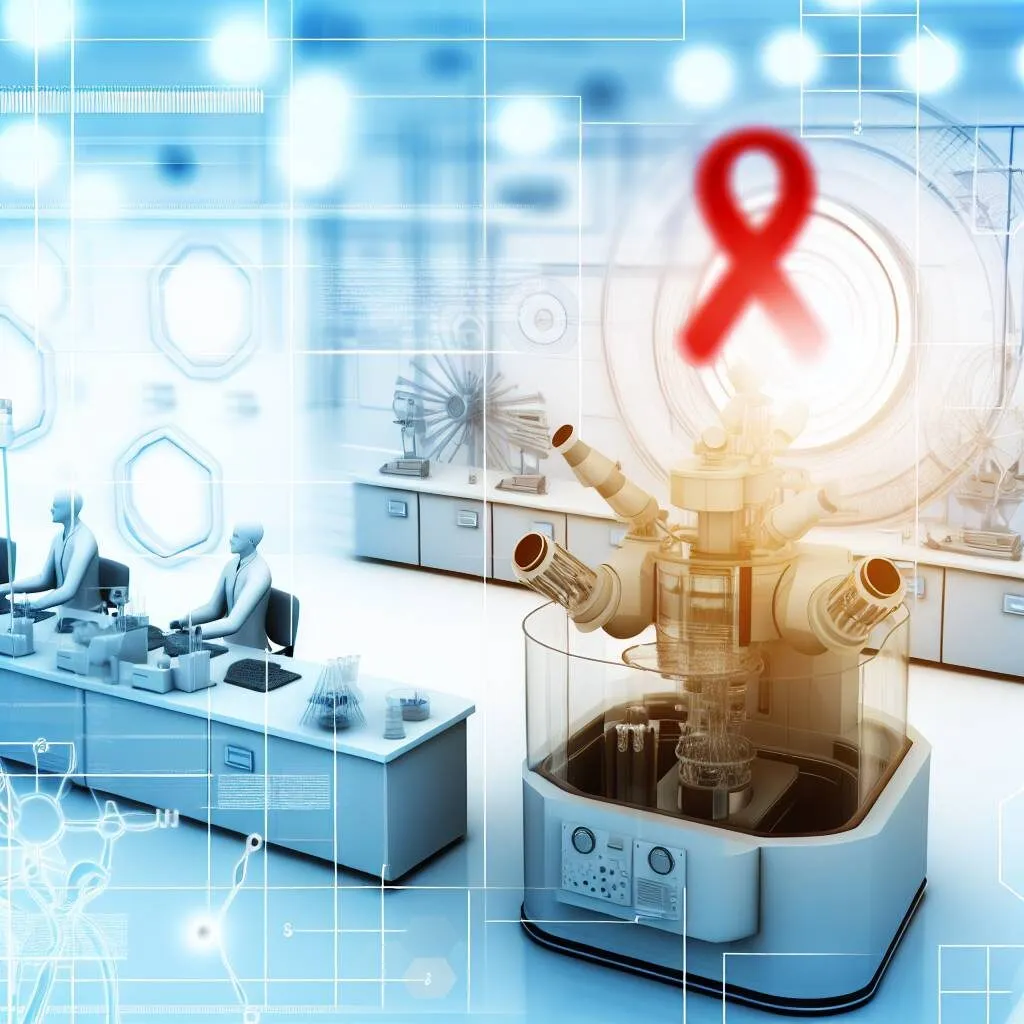HIV (Human Immunodeficiency Virus) is a virus that attacks the body’s immune system, reducing its ability to combat infections and diseases. Without treatment, HIV can progress to AIDS (Acquired Immunodeficiency Syndrome), which is the final stage of HIV infection where the immune system is severely damaged, and the body loses its ability to protect itself against illnesses. In recent years, advancements in medical technology have significantly improved the treatment of HIV/AIDS, enhancing the quality of life and extending the lifespan of those infected.
Medical Technologies in HIV/AIDS Treatment
Antiretroviral Therapy (ART) Antiretroviral therapy (ART) is one of the most crucial advancements in HIV treatment. ART combines multiple antiretroviral drugs to suppress the HIV virus, preventing its development and spread within the body.
- Effectiveness of ART: While ART cannot cure HIV, it can reduce the viral load in the blood to undetectable levels, allowing HIV-positive individuals to live healthily and prevent transmitting the virus to others.
- Types of ART Drugs: ART includes drugs like protease inhibitors, reverse transcriptase inhibitors, and CCR5 inhibitors. These drugs have different mechanisms and are usually combined for optimal effectiveness.
Genetic Engineering and Gene Therapy Research in genetic engineering has opened new possibilities for HIV treatment. Gene therapy can modify or alter genes within a patient’s cells to increase resistance to the HIV virus.
- CRISPR-Cas9: This technology allows for the modification of immune cells’ DNA, removing the genes necessary for HIV replication. While still in experimental stages, it shows promising potential.
HIV Prevention and Treatment Vaccines Developing an HIV prevention vaccine faces many challenges, but recent research has shown significant progress. Vaccines can generate immunity against the HIV virus, reducing the risk of infection.
- Clinical Trials: Some vaccines are in clinical trial phases, and if successful, they could become an effective preventive measure against HIV.
Medical Information Technology Medical information technology plays a crucial role in managing and monitoring HIV/AIDS patients. Health information systems help doctors track treatment progress, evaluate effectiveness, and adjust treatment plans for each patient.
- Mobile Apps: Apps that allow patients to track their medication schedules, record symptoms, and connect with doctors have been developed. These improve treatment adherence and overall health.
Testing Technologies Rapid and accurate HIV testing technologies have been developed, enabling early detection of HIV. Early testing helps identify the virus quickly and initiate treatment promptly.
- Rapid Tests: At-home rapid test kits reduce barriers to accessing testing services.
- Multiplex Testing: Current testing technologies can detect multiple viruses simultaneously, enhancing the accuracy of diagnosis and treatment.
Immunotherapy Immunotherapy is emerging as a promising method for treating HIV/AIDS. By stimulating the patient’s immune system to recognize and eliminate HIV-infected cells, disease management can be improved.
- CAR-T Cell Therapy: This technology uses genetically modified T cells (immune cells) to recognize and eliminate HIV-infected cells. Studies are ongoing to evaluate its effectiveness and safety.

Challenges and Future Directions
Despite significant advancements in HIV/AIDS treatment, many challenges remain. Stigma, lack of information, and limited access to medical services are significant issues in HIV treatment.
The future of HIV/AIDS treatment could be shaped by new technologies such as:
- Vaccine Development: There is hope that vaccines will become an effective preventive measure in the near future.
- Gene Therapy Research: Future research indicates the potential to cure HIV.
- Education and Awareness: Continuing education on HIV/AIDS, reducing stigma, and enhancing access to treatment services is essential.
Conclusion
Medical technology, from ART to gene therapy and vaccines, has brought significant advancements in HIV/AIDS treatment. These developments not only extend the lifespan and improve the quality of life for HIV-positive individuals but also open up hope for a future without HIV/AIDS. However, ongoing collaboration and efforts from the medical community, governments, and society are necessary to overcome current challenges and aim for a better future for those living with HIV/AIDS.
